Katana Explained: An Exploration into the Heart of Japanese Swords
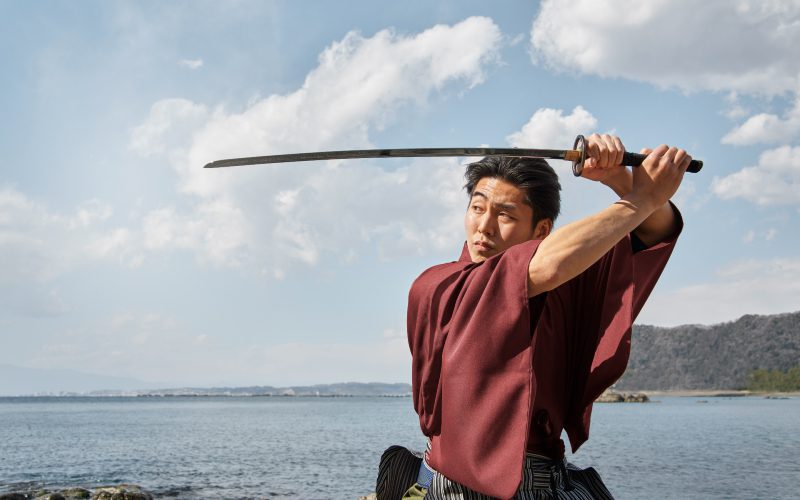
What’s in this article?
The katana, a curved, single-edged sword, is the weapon most associated with the samurai warriors of feudal Japan. However, it transcends its role as a mere weapon, as it evolved as a status symbol and work of art. Today, it remains one of the most iconic and revered weapons in Japanese history and culture.
This article discusses the unique characteristics of a katana, its metallurgy, its history, and how it became the symbol of samurai warriors.
What Exactly Is a Katana?
The term katana is often used to refer to Japanese swords in general, but in sword terminology, it specifically refers to a long sword with a blade length of over 60 centimeters long. Worn with its cutting edge up and tucked into the belt, the katana served as the weapon and badge of the samurai as none other than the samurais were permitted to wear the long sword.
Designed for powerful slashing attacks, the katana’s edge faces upwards, allowing both actions of drawing and cutting to be executed at the same time. It replaced the earlier tachi sword, which was worn slung from a belt with the cutting edge facing down, requiring two motions to wield the sword.
Characteristics of the Katana Sword
Apart from its cultural and historical significance, the katana is valued for its exceptional craftsmanship and aesthetic qualities.
Here are the unique characteristics of the samurai sword:
Blade
Japanese swords are most known for their curved blades, which also have several aesthetic features that make them a work of art. Katana blades feature the visible pattern along the cutting edge (hamon) and a distinctive blade surface.
Curvature or Sori

The katana blade has a shallow curvature that may be at the center, near the tip, or toward the hilt. Experts determine the
Temperline Pattern or Hamon
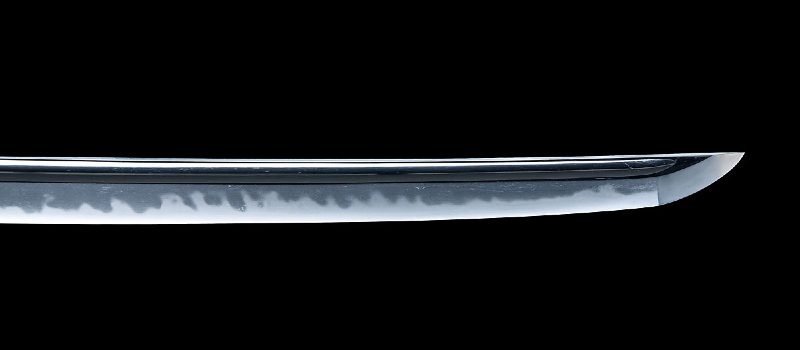
Katana blades feature a genuine hamon, formed by differential hardening treatments. There are various types of hamon patterns, ranging from straight to waves, arcs, clouds, and such. The hitatsura has a wild and rugged look, making it the most striking of all types.
Steel’s Surface or Jigane

The traditional katana blade is often darker than modern steel and is not reflective. When examining the surface, there’s a difference between the whitish steel color on the cutting edge and the grayish steel color on the other side.
Grain Patterns or Jihada
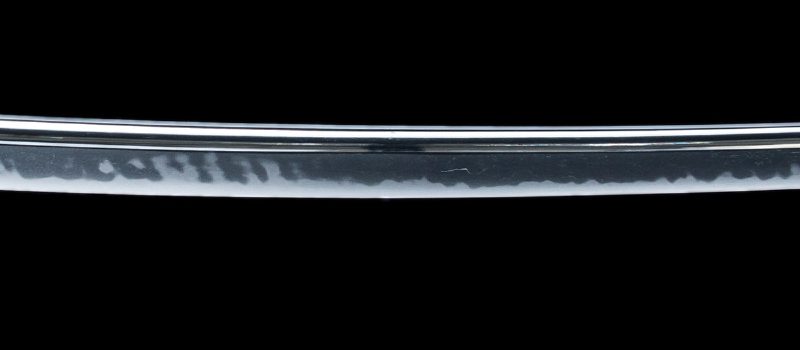
While forging the katana blade, the swordsmith repeatedly folded the steel, resulting in a distinct grain pattern called jihada. Depending on the technique, the grain patterns may feature straight lines, wavy lines, swirls, or a mix of linear and circular motifs.
Size and Length
Generally, Japanese blades are categorized based on their length. The blade length is measured from the base of the blade, excluding the tang, to the tip. A katana has a blade length of over 60 centimeters or 23 inches (over 2 shaku in Japanese).
Hilt or Tsuka

The hilt of a katana is called tsuka, consisting of the sword guard (tsuba) and other decorative metal fittings. It is usually covered with samegawa (shark skin), sometimes ray skin, and a braided hilt wrapping. The samurai often changed their sword mountings to flaunt their style and personality.
Sword Guard or Tsuba
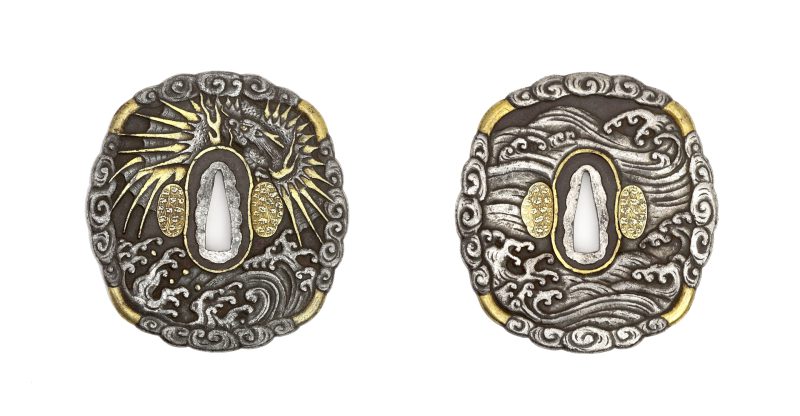
The most functional accessory of the katana, the tsuba is the sword guard that protects the hand of swordsmen.
The tsuba is functional and decorative, as some artisans even crafted elaborate designs that served as family heirlooms. Many tsuba artisans used gold and silver, as well as colored stones. The sukashi tsuba has a decorative cutout design, though it may not be suitable for battle.
Other Metal Fittings
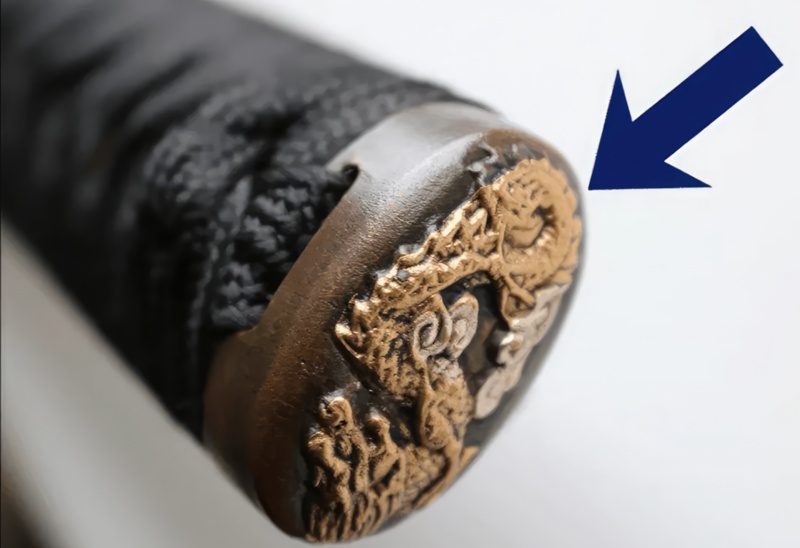
Often with matching designs, the fuchi and kashira protect both ends of the hilt. The fuchi is the collar next to the sword guard, while the kashira is on the pommel. On the other hand, the menuki is the metal decoration placed under the hilt wrapping.
Scabbard or Saya
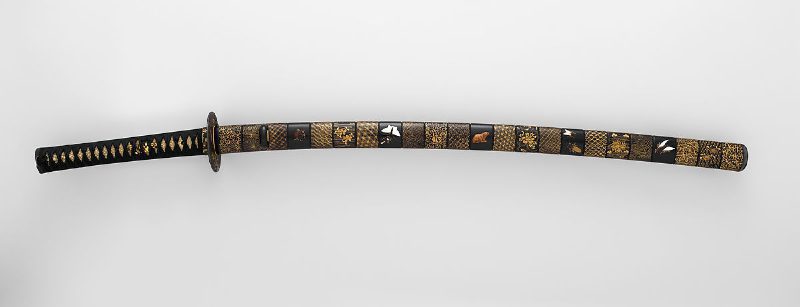
The katana comes in a scabbard or saya, often made of wood. To be placed in a saya, the
What Defines an Authentic Katana?
An authentic katana is hand forged by a licensed Japanese swordsmith using traditional production methods and holds an artistic value. A traditionally-made katana, a nihonto, is made from tamahagane and has all the artistic features, such as the hamon, jigane, and jihada. It also comes with official paperwork called origami, stating its value and quality to confirm its authenticity.
Depending on the swordsmith and other factors, an authentic katana may cost around $7,500, but works of well-known master swordsmiths may even be around $50,000 or higher. On the other hand, high-quality replicas are about $1,000 or less. Depending on its quality, a katana replica can also be functional for tameshigiri or test-cutting practice.
Are Katana Swords Illegal in Japan?
Ordinary citizens can legally own a katana, but the
However, decorative and training swords like iaito with zinc-aluminum blades that cannot be sharpened are exempted. In Japan, the katana is under the Firearm and Sword Possession Control Law, which forbids individuals from carrying the
The Japanese government also allows licensed swordsmiths to produce a maximum of two long swords per month, and only traditionally made Japanese katana forged from tamahagane—can be licensed. On the other hand, unlicensed katana swords or ones crafted by unlicensed swordsmiths are confiscated and the owner charged with possession of illegal weapons.
The Katana Sword in Martial Arts
The katana is the best-known Japanese weapon with many using it in martial arts today. Here are the Japanese martial arts that utilize the katana—or other alternatives that replicate the qualities of the real
In Kenjutsu
The katana is the defining blade of kenjutsu, which focuses on the traditional Japanese art of
Today, kenjutsu practitioners train with a wooden
In Kendo
The modern equivalent of kenjutsu, the kendo focuses on balance, speed, and fluidity in its techniques. Since the fighter’s goal is to end the combat as quickly as possible, training requires targeting areas such as the head, neck, forearms, and abdomen.
Instead of a real katana
In Iaido
The iaido involves perfecting the control of the katana
Today, iaido practitioners use iaito or blunt katana blades in training but never in contact drills. Modern iaido is a non-competitive art, though some competitions require participants to perform
In Battōjutsu
Also referred to as iaijutsu, the battōjutsu focuses on quickly drawing the katana from the scabbard and warding off an attack. Unlike other martial arts, the movements in battōjutsu are smooth, controlled, yet instantaneous. Practitioners often start practicing with a mock
In Toyama Ryu
The Toyama Ryu focuses on the practical application of the katana
The Japanese Imperial Army created the
Katana Sword Forging and Appreciation
Most swordsmiths in Japan craft the katana from tamahagane, high-quality steel made from the traditional tatara furnace. Some use sponge iron (kangan-testsu) or electrolytic iron (denkai-tetsu), though tamahagane is generally considered the best steel for sword making.
Japanese swordsmiths had mastered forging blades that were hard enough to retain a sharp cutting edge, but flexible at the same time to withstand heavy blows. They did this by incorporating a softer steel core into the harder steel forming the edge, and forged them together by heating, folding, hammering, and quenching.
The core steel of a katana blade (shingane) is covered by an outer steel jacket (kawagane). The shingane serves as a shock absorber, preventing the blade from breaking upon impact. However, there are various methods in creating a Japanese blade, and different swordsmiths may employ their own unique techniques.
History of the Katana Sword
The invention of the katana was a response to the changing nature of battles, demanding quicker response in combat. It also marked the transition of using the Japanese sword from fighting on horseback to fighting on foot. More than that, the katana represents the pinnacle of Japanese sword development, which began in ancient times.
In the Muromachi Period (1338–1573)
Within the Muromachi period emerged a century of military struggle known as the Sengoku period, the Age of the Country at War. During the tumultuous period, the uchigatana developed out of the need for speed in combat. The samurai wore their uchigatana edge-up in their belts, making it easier to draw and strike compared to the earlier slung tachi that required two actions to wield the
At first, the uchigatana complemented the tachi, but it later became so popular that it replaced the tachi. Eventually, swordsmiths started to forge uchigatana in short and long lengths. The shorter blades were called wakizashi, while the longer blades were called katana. The wearing of paired swords, one long and one short among the samurai class also became common.
In the Momoyama Period (1574–1600)
During this period,
In the Edo Period (1603–1867)
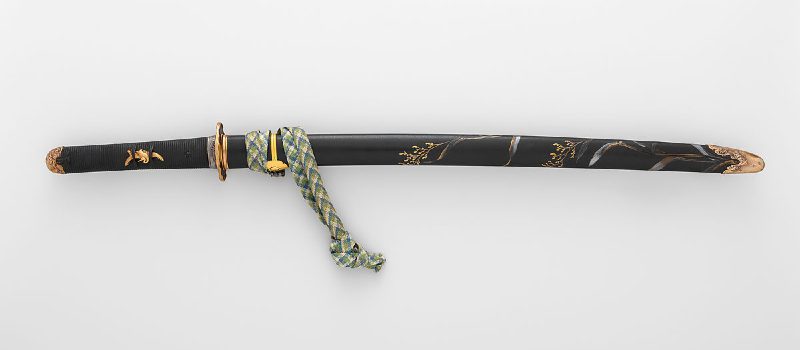
During this period, the daisho, a
In the Meiji Period (1868–1889)
In 1868, the Meiji Restoration led to the abolition of the feudal system, so the samurai also lost their privileged position. The emperor regained power and formed a national army, which conscripted men from society. In 1876, the Meiji government issued the Hatorei edict, which prohibited the carrying of swords in public. The government also began to modernize the Japanese military, so the katana swords were no longer practical for modern combat.
Facts About the Japanese Katana
The katana served both as a weapon and the soul of the warrior. No samurai would ever be without his katana, so the
The samurai wore the daisho, a
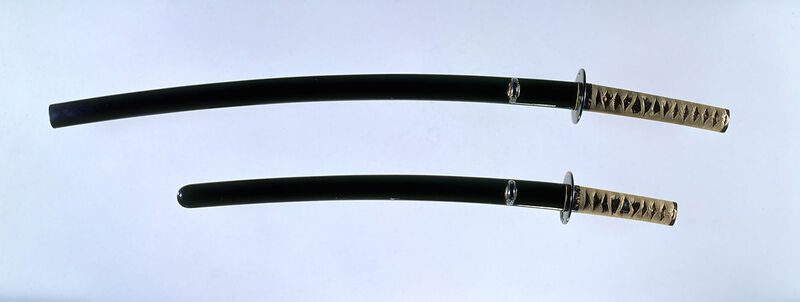
The term daisho translates as large and small, in reference to the longer
The meaning of long
Today, swords of more than 2 shaku, approximately 60 centimeters, are called daito or long swords. On the other hand, swords shorter than 2 shaku but longer than 1 shaku, approximately 30 centimeters, are called shoto or short swords. Hence, the katana is considered a long
Swordsmen used wooden swords in training to preserve katana blades.

In the Muromachi period, martial arts training became common, so swordsmen wielded wooden swords called bokken to practice their
The samurai followed a strict code of honor and discipline.
Carrying the katana and wearing the correct armor were vital aspects of being a samurai. But apart from military skills and fearlessness, the samurai followed a strict code of conduct known as bushido, emphasizing loyalty, honesty, and self-discipline. Today, bushido serves as the basic code of conduct for Japanese people.
The katana blade is longer than a ninjato or ninja
The samurai
Conclusion
The samurai of feudal Japan trained in several weapons, especially the katana. Although many traditional arts associated with these warriors have disappeared, the art of Japanese sword making has persevered. Today, the katana remains significant not only in martial arts but also in Japanese culture and history.




